As I covered in my other post, since my youngest sister lives in Los Angeles California, I tend to get down there at least once or twice a year. Every visit, there is inevitably a visit to Thai Town and eating Thai food, which I covered a bit in my last post with a look at Isaan Station. The other certainty is that I will get to the San Gabriel Valley, also known as SGV.
Located to the east of the Los Angeles area, Asian immigrants have been settling into this area for more than 150 years. In fact, SGV has the highest concentration of Chinese Americans in the US, and in general SGV is one of the most ethnically diverse regions in the country. There are approximately 2 million people living in the 400 square miles that is the San area.
Besides the Chinese, other ethnic groups who call this area home include Vietnamese-, Korean-, Filipino-, Japanese- (notice all the hyphens) Americans. So yes, a super Asian-American area, but also the home to Armenian-Americans and Native-Americans and a large Latino-American contingent. Latino actually outnumber the Asians and together the Asian and Latino Americans outnumber all others in this area to be the non-white majority. There’s even a SGV For Life brand that celebrates this mix of the life here that is a mix of Latino and Asian American cultures.
The SGV boasts not only many minority ethnicities, but also multiple generations since the original immigration. After all, there are people descended from those have been settling here since the last 1800s and early 1900s, as well as newer settlers from a few decades to just arrived recently.
One of the side benefits of this area is the amazing food here. You can find food that is deep in its roots to its native heritage. Many times the dishes are almost exactly the same as if you have traveled to that country’s roadside restaurants, thanks to the ethnoburbs here that are built in demand and financial support for such food businesses (both in terms of groceries and prepared foods like bakeries and restaurants). People in the SGV are very proud of their strong cultural foundations that persevere outside their historical country.

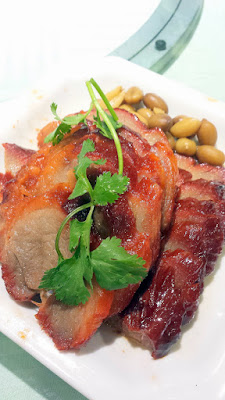
At the same time, you can find new perspectives thanks to the large population of ethnic-Americans who take their history and culture along with their 1st and 2nd and 3rd generation American experience and update it to the 20th and now 21st century. Flavors and presentations and service evolve as they continue to pass it on to the next generations with better ingredients and bringing in new techniques and ideas from the culinary world.
An example of this is the intermingling of flavors such as the famous Kogi BBQ, which here in Portland is represented by KOi Fusion. The idea is mixing up burritos and tacos with marinated Korean grilled meats but without sacrificing the original strong and distinctive flavor profiles from which inspiration came from – no “Americanized” food here.
Another example is a newer updated dim sum experience that is emerging. The traditional dim sum has the iconic women and men, usually in little vests and bow ties (I don’t know why…) pushing carts through the dining room. As they arrive at each table, they pause to sell you their items from that cart, letting you peek at what mysteries they may have in their steamer containers and dishes. You get immediate satisfaction of taking that very container onto your lazy susan turntable on your dining table, and with a quick pick of your chopsticks, enjoying it mere minutes after seeing it.
There is no menu during traditional dim sum – just the adventure of ordering based on what you see and maybe a few ingredients that may be shared by the cart’s server. It may end up being described as simply as “shrimp” or “chicken”… But buyer beware because what is described as “fried taro” turns out to not be vegetarian because it also has the surprise ingredient of pork throughout. Yes, eating dim sum is pretty much a vegetarian nightmare. You wind up accidentally eating meat or one of the few vegetarian options pointed out to you is the dish to the right below- “gluten”.
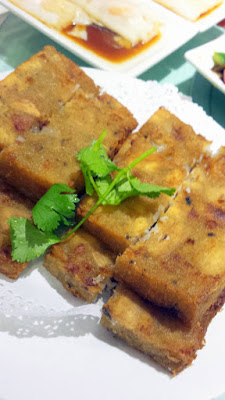

A few stamps or scratches of a pen onto your dim sum card to add those plates (which come in generally small, medium and large sizes and prices for S, M, L and SP -Special) and the carts move on. As you eat your eyes scan for the next cart. It means there may be no order to what you get to eat as it’s up to the whims of the pushcart timing and routes to where you are sitting. Some food may be fresher than others. It also pretty much means you have no idea what the final bill is until the head server comes does the math.


Newer generations don’t have this patience. I have seen some people get up and hunt down their desired dishes as they walk to carts they see, semi “cutting in” on the route – but also ensuring it doesn’t run out and is still hot and fresh by the time it arrives on our turntable.
Thankfully, some restaurants have updated the traditional dim sum process by offering menus when you are seated so you can also mark off everything and anything you want (taking a cue from filling out sushi and sashimi cards from the Japanese restaurants perhaps). Some of those menus even helpfully have photos to help you recognize items you want, just like when the cart lady lifts the top off a container.

Anything ordered from these menus is then made to order and delivered straight to your table, guaranteeing the desired dim sum dishes. You can imagine this is probably a great cost-savings to the kitchen as well in making things that they know people will definitely eat, rather than having some items get pushed around in carts, getting cold and tossed.
I certainly love the ability to see and get everything and anything among the offerings of they are all listed on a menu. But, I still like the adventure of cart service top, including not knowing what surprises lie under the lid, and I like the personal service of the carts rolling to the table and the cart lady pointing out items that you haven’t had that are new to her cart, or that she thinks you might like.

King Hua Restaurant in Alhambra, one of the neighborhoods inside the SGV, was my stop with my family for Saturday lunch during my latest trip. King Hua bridges the divide between the traditional and modern dim sum by offering both of what I described above, so definitely the best of both worlds. Their dim sum menu is also massive, with more than 130 options. They even have six options for your tea to go along with your dim sum.

With a mix of 5 of us ordering (my brother, who always over-orders, my new brother-in-law who at least had been to King Hua before, myself, and then 2 vegetarians peering a the menu on their own) and a total of 10 of us at the table, the photos you’ve seen throughout are some but not all the dishes that landed on our table. Several dishes as you can guess we had multiples of, and you can also be sure that there were times I had no idea what I was about to eat. There were familiar dishes that are staples of dim sum, and new dishes that I haven’t seen since being in Asia or just ever.

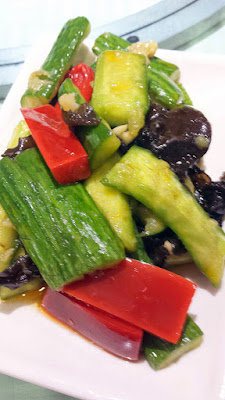
My own favorites in ordering dim sum always include shimp dumplings (har gow), shrimp and pork dumplings (shu mai), rice noodle rolls (cheong fan), steamed spare rib, Shanghai soup dumplings if available, taro or turnip cake if available, wrapped crab claws if available, roast duck, crispy pork, and garlicky stir fried greens like ong choy or bok choy or Chinese Broccoli (Gai Lan) as usually the lone vegetable plate on the table.
As always, dim sum starts slow, usually with a few dishes picked off a cart, as the dishes ordered from the menu eventually begin to arrive. Then more and more of the ordered dishes come, and there are more carts visiting that you may pick some dishes here it there still. Now becomes a bit of a race and spatial puzzle in trying to fit dishes on the turntable and finish some dishes to stack or get the container off the table as you try to courteously spin the lazy Susan turntable to share dishes.
One thing I also really liked about King Hua is that several of the pastries they offered to cut into smaller portions for sharing. This is a great strategy as particularly the buns with that bread can be filling so you want to share so you can get more variety as part of your meal.


I liked the touch of putting the soup dumplings in individual containers to make sure there is no sad loss when trying to roll these out of the steamer and accidentally breaking it, and watching that precious delicious soup filling bleed from the dumpling being lost instead of filling your mouth.


Another particular favorite was that there were 2 versions of Egg Custard Tarts – a more yellow another orangish one (#67 and 69). Both were great, though I lean towards the King Hua egg custard version.


A newly discovered favorite is a dim sum item that I’m sure is a special edition to showcase bringing together the old and new: King Hua Baked Chicken Salad buns. Yum. That’s not something you see at a dim sum usually!


Overall, a successful dim sum adventure for my family and I at King Hua. If you are in the Los Angeles area, I highly recommend you do a search for some good eats in the San Gabriel Valley and give the area a try: there are so many possibilities, including listings from LA Eater’s guide to the SGV, a list by LA Weekly of restaurants in the San Gabriel Valley, FoodRepublic’s 13 Best Dishes East San Gabriel Valley, Time Out Magazine did a listing based on whether you are looking for breakfast, lunch, or dinner among some of the many resources out there.
Have you been to dim sum? What would you prefer, push cart service or being able to order from a menu list? Are there any particular dim sum favorite dishes you have?
Did you know about the San Gabriel Valley, and have you been in that area of LA?






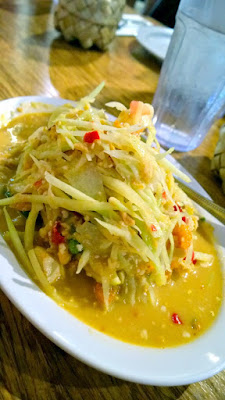


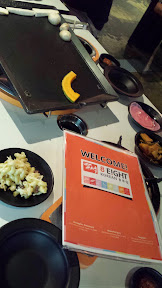



yummy! I’ve never tried dim sum but i definite need to now!
What a great post! I love all the detail that you went into about the San Gabriel Valley and explaining dim sum.
I have enjoyed dim sum countless times because my husband and his family are Chinese. So we go out to dim sum several times a year to celebrate birthdays or any other special occasion. I recognize a lot of the dishes you shared, but I would love to try the King Hua Baked Chicken Salad buns! Those look super delicious!!
I definitely was surprised at the Chicken Salad buns- usually those buns end up being very sweet, but with the chicken salad inside it was a winner. Just shows that even being dim sum veterans to always try something new!
So many choices! I’ve been to dim sum once and it was really fun, but hard not knowing what everything was!
Yes, it’s definitely part of the dim sum experience sometimes to not know what you are going to get- which is a good thing the dishes are small and shared during this eating adventure!
This is great! Except that it isn’t in Portland #sadfaces
I’ve always been a little intimidated by traditional dim sum service, so I’m glad to know that the process is evolving. I’m heading down to LA this weekend, and I may have to take a little lunch sidetrip for “business purposes.”
I hope you do- there are multiple lists of great dim sum options all over LA, wherever you may be staying!